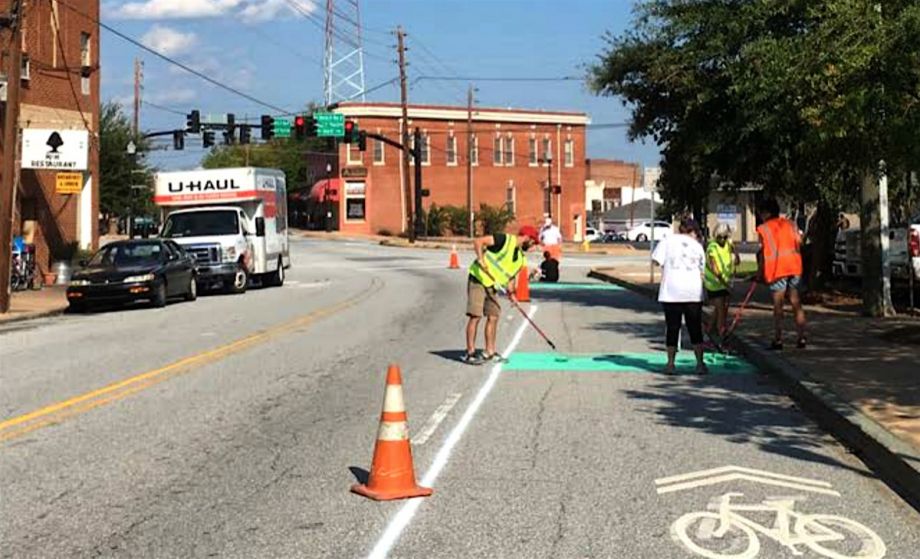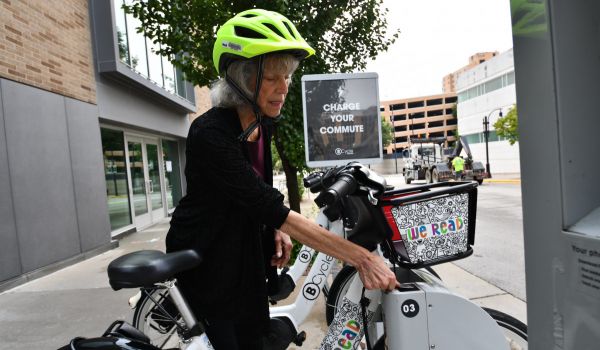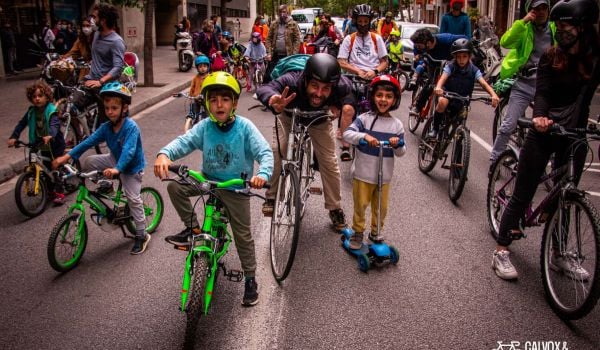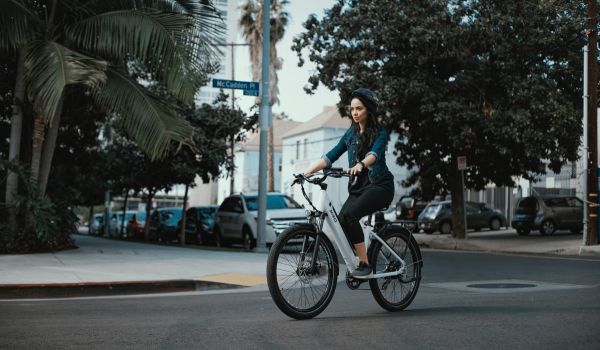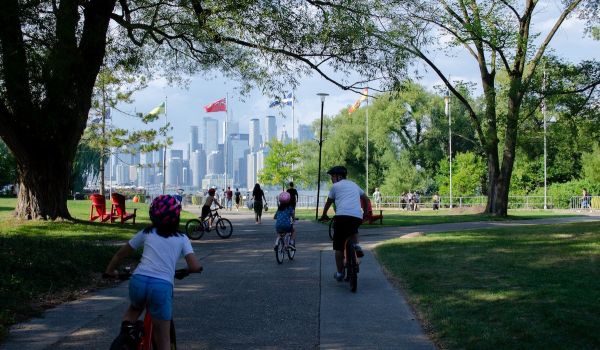Tactical urbanism is meant to quickly, cheaply demonstrate how to change a space for the better — not only to prove that it can be done, but also to ultimately inspire city officials to adopt permanent improvements. By that metric, the Macon Connects pop-up bike lane experiment was a success. Not only did it show that people would bike if they had dedicated cycling lanes, the city is now finalizing plans to install a permanent bike lane downtown with more potentially on the horizon.
Macon Connects is a collaboration between a downtown Macon economic development nonprofit called NewTown Macon, Better Block Foundation and 8 80 Cities. In September 2016, the group, along with 80 volunteers, installed 8 miles of temporary bike lanes in downtown Macon and saw the number of bicyclists skyrocket in the week the lanes were on the ground.
The project grew out of a 2015 downtown master plan. During public outreach, people frequently mentioned how much they liked walking and biking on Macon’s 11-mile riverfront trail. NewTown President Josh Rogers says that’s when the light bulb went off: “I thought why can’t we walk and bike downtown? We had to drive to even get to the trail. There were no connections from sidewalks and no bike lanes.”
Of course, building a bike lane network and good sidewalks downtown would cost many millions of dollars. But Rogers had met Better Block’s Jason Roberts and learned about the group’s low-cost, tactical urbanism approach to infrastructure building.
Macon Connects won grant funding to build a temporary bike lane network. They worked with the city and county traffic engineers who in turn worked with the state Department of Transportation since some of the downtown streets are state routes.
Last fall, the group and their many volunteers installed the pop-up bike infrastructure. To give people a taste of what’s possible, they installed five types, from sharrows to paint-buffered lanes to bollard-protected lanes. Unsurprisingly, rider surveys found that people preferred the protected infrastructure over unprotected lanes and sharrows.
For the week the pop-up ran, ridership jumped. Daily counts found there were an average of over 200 riders a day, up from about 80 riders a day immediately before the launch.
“We went from practically nobody riding,” he says. “You’d get one or two riders a day, the most aggressive people who are in great shape who don’t mind it doesn’t feel safe.”
Rogers notes that the 80 per day number was likely due to Macon’s launch of a bike-share just before the pop-up lanes were installed. After the pop-up lanes were removed (and bike-share wasn’t as much of a novelty), ridership dropped back down to about 18 people a day. But he still calls victory.
“It was successful because it proved to everyone that you have to have bike accommodations before people will ride and if you have the accommodations people will ride,” Rogers says. “You’ve got to build it and got to build in a way it that connects people to the places they want to go.”
Bibb County engineer David Fortson agrees that, “the overall event was positive and it was good for the community.”
That said, Fortson takes issue with how fast the project came together.
“We in the county engineers office had a lot of heartburn with how it was implemented,” he says. “Less than three weeks before the pop-up was supposed to occur, we got information on what they wanted to do. The plans were pretty sketchy in a lot of ways. They wanted to put temporary markings on a major state route and you just can’t do that.”
Macon Connects and the engineers compromised on plans in the end. “We just wanted to make sure it occurred in as safe as manor as possible,” Fortson says. And despite his concerns with implementation, he gives the pop-up event credit for leading to the implementation of the permanent bike lane downtown this year.
The event also helped shape his thinking about bike infrastructure. “I would say yes, it did [change my mind],” he says. “I think both bike lanes and bike infrastructure are important. But also, the event just reinforced the need for proper planning when you do make permanent improvements.”
The permanent lane is going to be installed on Walnut Street, a state-owned thoroughfare in downtown Macon. Rogers says the street “is just wide-open asphalt and doesn’t need to be. It connects three neighborhoods to downtown including a low-income neighborhood. It’s perfect [for a lane].”
The plan is to install 3 miles of traditional, unbuffered bike lane. NewTown is funding 1 mile and GDOT is funding the rest. Fortson says the plans have been finalized and sent to GDOT for approval, since it’s a state route.
Rogers hopes to continue capitalizing on the momentum generated by the pop-up event. His organization created a complete streets policy for Macon that they’re pushing the county to adopt.
“It felt a little like tilting at windmills advocating for bike lanes before this event,” he says. “The event just changed minds about what’s possible and opened up a world of possibility.”

Josh Cohen is Crosscut’s city reporter covering Seattle government, politics and the issues that shape life in the city.
Follow Josh .(JavaScript must be enabled to view this email address)

